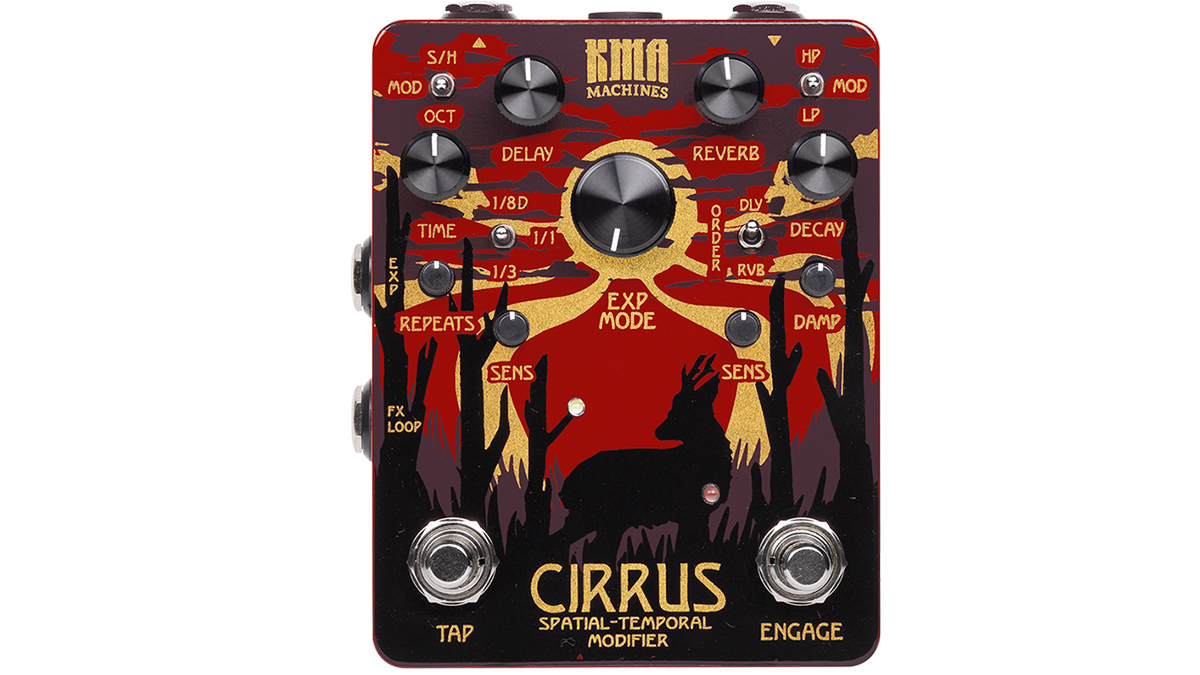KMA will leave your head in the clouds with the Cirrus delay and reverb
The endlessly tweakable "Spatial-Temporal Modifier" is the company's first fully digital effects pedal

KMA Audio Machines' Cirrus Spatial-Temporal Modifer combines delay and reverb, with three modes for each, and sees the company take its first step into the world of fully digital effects pedals.
The delay modes include Modulated Delay, which KMA says "fluctuates the Delay signal for a dynamic dancing tape echo-inspired modulation that’ll deliver everything from subtle sways, to crazy pitch-bends." Nice. While the Sample and Hold mode places a filter in front of the delay for synth-esque tones and the OCT mode adds an octave higher to your delay signal for added psychedelics.
The reverb, meanwhile, is just as trippy.
Modulated Reverb (MOD) performs a similar trick of adding some movement and wobble to your reverb trails, while you can also select an opening Low-pass Filter (LP) to add dynamic shimmer to your highs depending on how hard you are picking, or a closing High-pass Filter (HP) offers some lo-fi textures.
There is also a toggle switch to change the order of the effects – delay then reverb, reverb then delay – opening up more possibilities. And both sides of the pedal are hugely configurable, with sensitivity controls, and mix to dial in just what you need. It should do subtle, too. And there is a three-way TAP division switch on the delay side to configure how you want your delay to repeat.
The enclosure has two footswitches, one for tap-tempo, the other to switch on, off, or, when the effect is engaged, you can hold it down to dime the reverb decay so you can have infinite feedback.
The tap-tempo footswitch performs similarly for delay, and if you hold both down together you can combine these effects.
Want all the hottest music and gear news, reviews, deals, features and more, direct to your inbox? Sign up here.
The Cirrus has an input for an expression pedal so you can control parameters on the fly, and a serial effects loop. It'll take 9VDC power to get it going.
The Cirrus is priced £185 ($230, €210 approx) and you can find more information and order it here.
Jonathan Horsley has been writing about guitars and guitar culture since 2005, playing them since 1990, and regularly contributes to MusicRadar, Total Guitar and Guitar World. He uses Jazz III nylon picks, 10s during the week, 9s at the weekend, and shamefully still struggles with rhythm figure one of Van Halen’s Panama.


